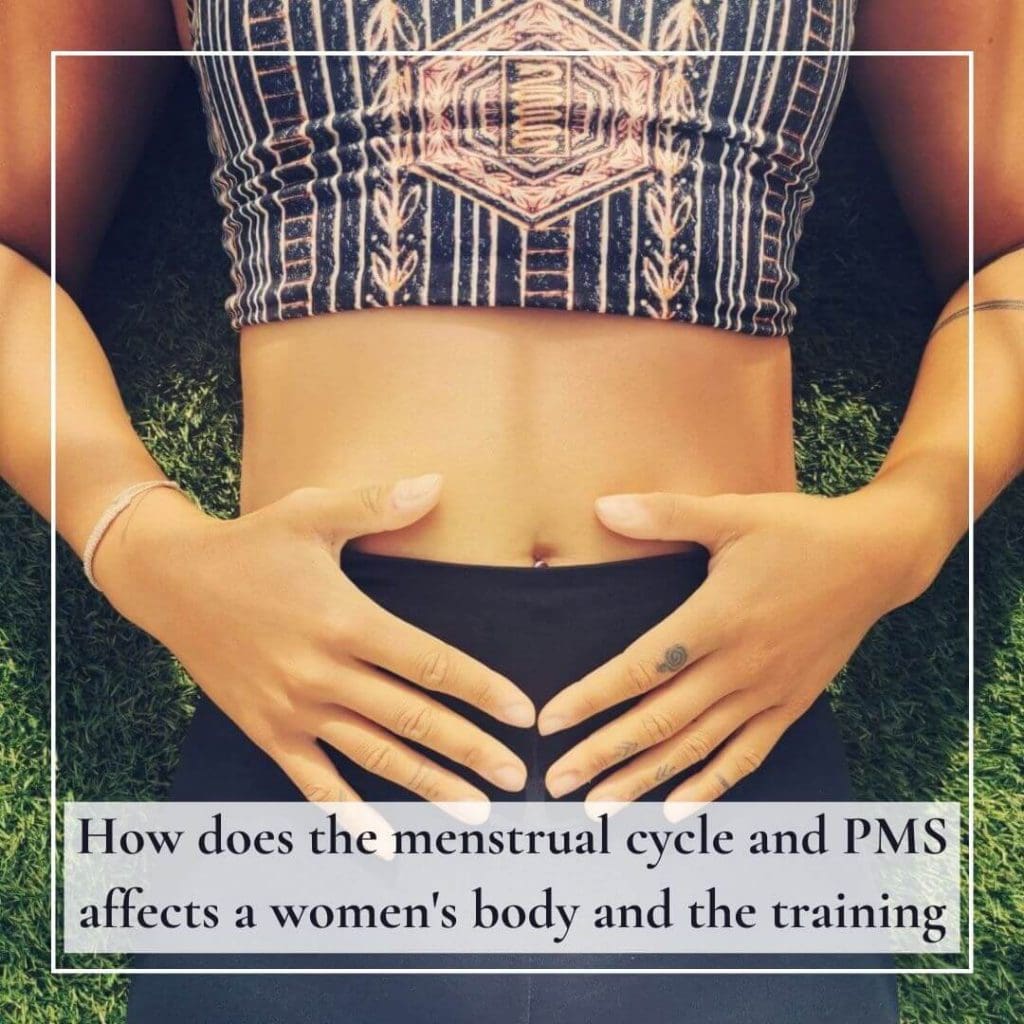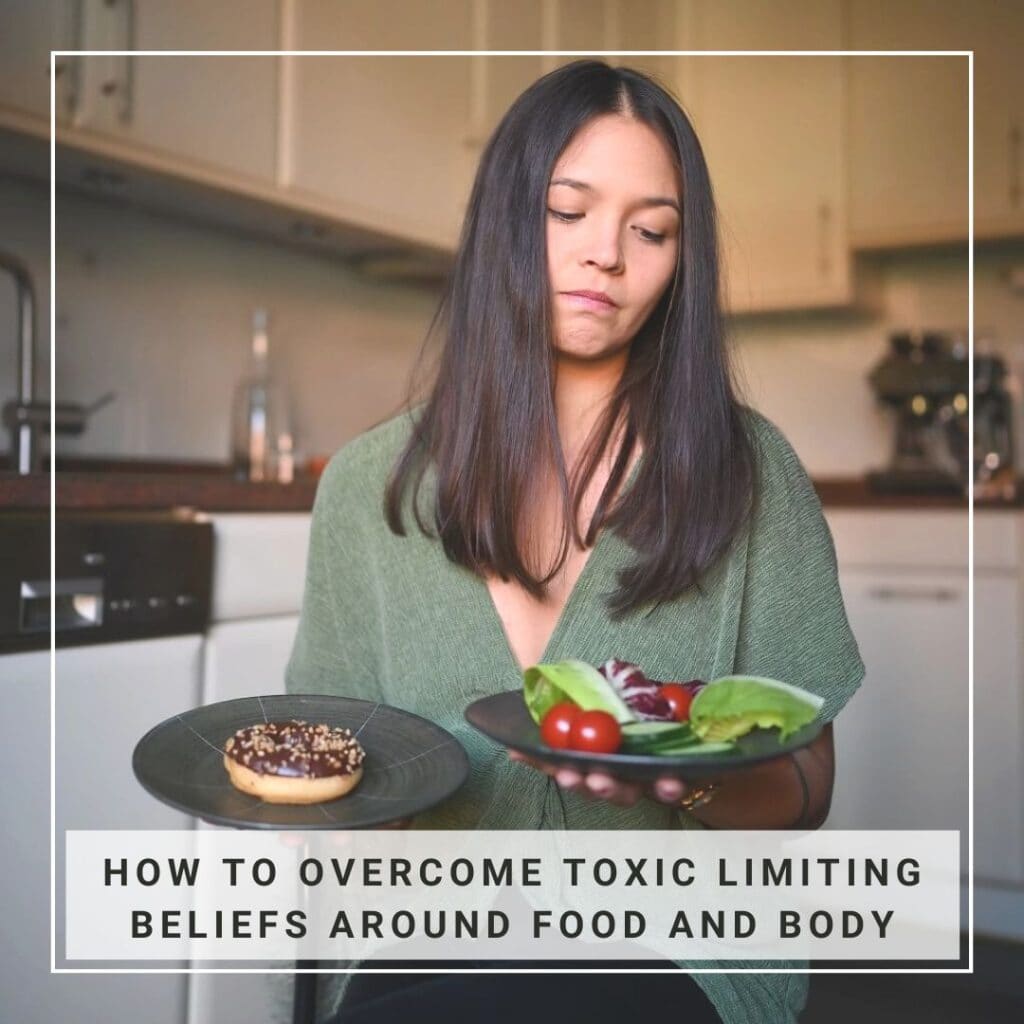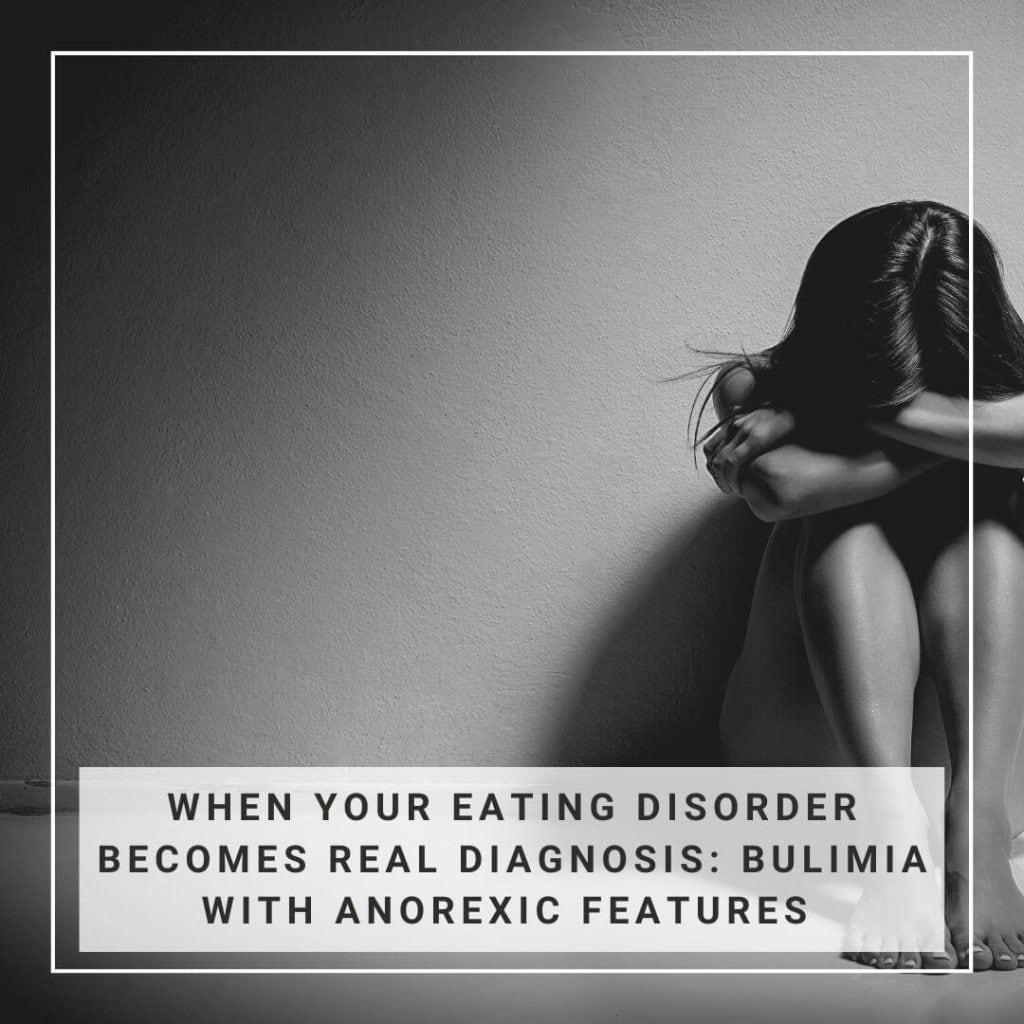Understand Yourself by Understanding the Menstrual Cycle, Premenstrual Syndrome and How This Affects Your Training.
<< I wake up in the morning like any other day, I go to the bathroom for a shower and dress up. I realize that my pants are much tighter than usual and after a look into the mirror I wonder what I ate for dinner yesterday that I’m so bloated. However, I continue with my morning routine – yoga, workout and meditation. After the first movements I feel a pain in my lower back, so I take it easier and continue with my workout – but after the first block of exercises I feel exhausted and tired. My body feels heavy and weak.
And so I take a rest – notice my feelings, my emotions – I could cry immediately, I feel vulnerable. After finishing my morning routine more or less I’m craving for food, a big desire for something sweet. After breakfast the craving lasts and I feel like eating the whole day.
In the evening I have another training on the program – Brazilian Jiu-Jitsu. The slightest contact feels very painful and I hesitate rolling. On the way home I reflect my day, start counting on my calendar in my head and suddenly I realize – I must be quite in the end of my monthly cycle. >>
PMS sends its regards.
Even though I’m tracking my cycle pretty good by checking my temperature, my cervical mucus and my calendar, I sometimes get surprised by PMS the week or days before my period starts again.
To understand a little bit more what’s going on in the female body during this time of the month and how it’s affecting the energy levels and trainings, I wrote this blog post which I want to share with you.

The Menstrual Cycle
Before talking about PMS, it´s necessary to understand the complex cycle of the female body which continues every month – from puberty until menopause. I start with a little overview of the two phases of the cycle, important hormones, where they come from and what their main jobs are. If you want to know more about the phases read on below.
GnRH – Gonadotrophin releasing hormone – releases from the hypothalamus – triggers the release of FSH and LH from the anterior pituitary gland
FSH – Follicle stimulating hormone – releases from the anterior pituitary gland – stimulates the growth of the egg in the follicles
LH – Luteinizing hormone – releases from the anterior pituitary gland – triggers the ovulation, the exit of the egg out of the follicle
Estrogen – secrets by the granulosa cells (cells of the follicles) in the first phase of the cycle and by the Corpus Luteum in the second phase of the cycle – triggers the development of breast tissues, the lining of the uterus and the expression of female sexual characteristics
Progesterone – secrets by the Corpus Luteum (the cells of the follicle AFTER ovulation) – thickens and maintains the endometrium (the lining of the uterus) as a preparation for implantation of a fertilized egg
2 Phases of the Cycle
I. Follicular Phase –the phase where the egg is developing in a follicle in the ovaries. This phase starts with the first day of the cycle – the first day of the menstruation – and can vary in the duration, mostly around 14 days.
II. Luteal Phase – the phase starts with ovulation when the egg exits the follicle, ready to get fertilized. In case of no pregnancy the body starts preparing again for a new cycle. The luteal phase always remains 14 days.

The Follicular Phase
The follicular phase starts with the first day of menstruation, which is the beginning of the cycle.
Characteristics of this phase:
- Basal body temperature lower
- Estrogene level low and starts to rise
- Progesterone level is low
- FSH and LH start to rise
- Cervical mucus is thick and untransparent
The menstruation bleeding is the break-down of the endometrium (the lining of the uterus) and takes place, when there is no fertilized egg to implant in the lining. To renew the lining for the next attempt, it has to break down first.
The hypothalamus releases a hormone called ‘gonadotrophin releasing hormone’ (GnRH), this hormone triggers the release of FSH (follicle stimulating hormone) & LH (luteinizing hormone) from the anterior pituitary gland.
The main job of FSH is to stimulates around 5 to 20 follicles in the ovaries, which means they start to grow an egg inside. The cells of the stimulated follicles (called ‘granulosa cells’) secrets estrogen, which is important for the development of breast tissues and the endometrium (the lining of the uterus) and causes the cervical mucus to become thinner and more transparent.
The body prepares for the possible fertilization. The endometrium starts to become thicker and enriched in blood and nutrients, so a fertilized egg could implant.
At the same time, the follicles grow and the concentration of estrogen rises, this gives a negative feedback to the hypothalamus and the release of GnRH stops and so does the release of FSH & LH. Because of the drop of FSH smaller stimulated follicles die (only one remains).
Shortly before the ovulation LH reaches its peak (around day 14 in the cycle) and since the main job of LH (luteinizing hormone) is to trigger the release of the egg out of the follicle – the ovulation begins.
How does this affect the training?
During the follicular phase women experience higher pain tolerance and the average energy level seems higher. At this time the female body can easily perform high-intensity workouts.
Since the estrogen levels increases during the late follicular phase, strength training can be beneficial.
With the Ovulation the second phase of the cycle starts – the Luteal Phase.
The Luteal Phase
As mentioned already this is the phase where LH (Luteinizing hormone) triggers the egg to exit the follicle and ovary to get fertilized in the fallopian tubes. In case of a fertilization the egg gets implanted in the endometrium in case of no pregnancy, the endometrium breaks down to renew itself.
Characteristics of this time:
- Oestrogen level is high
- Progesterone starts to rise
- The basal body temperature changes and rises (because of progesterone)
- Cervical mucus is thin and untransparent which allows the sperms to travel (only at the time of the ovulation – after it gets thicker again)
- FSH & LH level decrease
The follicle which releases the egg collapse and transform to the ‘Corpus Luteum’ – a mass of cells – which secrets the hormones progesterone and estrogen.
The job of progesterone is, together with estrogen, to thicken and maintain the endometrium (the lining of the uterus) as a preparation for implantation of a fertilized egg. In addition, estrogen is working on the breast tissues as well.
When the egg has been fertilized it implants in the lining and the embryo secrets the hormone ‘human chorionic gonadotrophin’ (hCG), which gets detected by a pregnancy test. The hCG keeps the Corpus Luteum alive in order to keep the progesterone concentration high and the lining of the uterus thick. (In case of a pregnancy the placenta takes over the progesterone secretion after around week 5-10).
When the egg hasn’t been fertilize the Corpus Luteum breaks down, because there is no secretion of hCG,
which would keep it thick. In further consequence the concentration of progesterone and estrogen drops and the endometrium breaks down, because the womb doesn’t need the lining, since there is no egg to implant -> menstruation occurs -> GnRH triggers the release of FSH and LH and the cycle starts from the beginning.
How does this affect the training?
After ovulation the change of the hormones, the higher concentration of progesterone and estrogen the metabolism gets a boost and the body temperature gets higher than before, which is remarkable throughout daily life as in a training. High intensity trainings seem to be harder than in other phases of the cycle.
Because of an increased fluid retention, the body mass might be higher and women feel bloated and heavier. In high estrogen levels the body stores more glycogen and utilizes more fat as fuel, since estrogen can reduce carbohydrate oxidation. This can make it more challenging to reach higher intensities in training and the body feels in need of a few extra carbohydrates which leads again to carbs cravings after ovulation so the energy intake of a woman is rising naturally (up to 300 kcal). At the time prior before the next period, as the progesterone level decreases, a lot of women facing PMS (Premenstrual syndrome).

What Is PMS (Premenstrual Syndrome)?
PMS is not a mythos, but it’s not a diagnosed disease either*. PMS is a combination of physical and emotional symptoms that affect many women (up to 80%) due to the huge hormonal changes. Some women may feel the symptoms more, some less.
*However, PMDD is a recognised disease and is one of the most intense types of PMS.
Premenstrual dysphoric disorder can cause deep depressions, panic attacks, anxieties plus the known PMS symptoms in the second half of the cycle. Compared to PMS only up to 5 % of women can be affected by PMDD. It is diagnosed by doctors and requires treatment under the supervision of professional help.
Physical symptoms can be:
- Swollen and/or tender breasts
- Constipation, feeling bloated and heavy
- Cramps, headache and backache
- Lower tolerance for pain, noise and light
- and lot more…
Emotional symptoms can be:
- Appetite changes and food cravings
- Tension, anxiety, feelings of sadness and vulnerability
- Mood swings
- Sleeping problems
- and a lot more…

What Can We Do To Lower the Symptoms of PMS and How To Deal With It?
First of all, it is important to accept the sensations and needs of the body as they are, to work WITH them and not against them. Otherwise, we will always find ourselves in situations, where we judge our body and feelings as failures, because we’re not performing like we used to, like we think we should.
As in so many times in life the main factors, which cures the symptoms are first of all:
- Exercise regularly throughout the whole month
- Choose healthy foods all of the time
- Get enough sleep and recovery
- Find your ways to keep yourself calm and to reduce stress
Even though, women have a higher craving of sweets and sugars in this time, it’s important to find healthy ways to satisfy the desire, rather than eating high processed products with refined sugars (e.g.: bake your own sweet potato brownies, rather than buying donuts). Do not drink alcohol or smoke and reduce caffeine intake. A balanced nutrition with high intake of minerals and vitamins is crucial – so eat your veggies and fruits.
Regular exercises, in combination with enough sleep, rest and recovery, can help to keep the energy level and the mood higher. A lot of times the question pops up – what kind of exercises are good for me at this time? This is something very subjectively – some women can do HII trainings during PMS, while others find it to hard to go for an easy run. Some women find release in Yoga poses and some in massages. In any case, most important is to listen to YOUR body. If your body feels weak give it some rest, you don’t have to give 120%, just give as much as you can.
<< Only You Know Best, What’s Best For You >>
Some women may already do all this and still not find an ease of PMS. In this case, it might be an option to make a hormone profile to check if there is a lack or a peak in any hormone and/or try natural supplements like chasteberry (get in in the pharmacy) and special teas for cramp release.
Thanks for reading. I’m happy if you share your opinion and experience with me by commenting below. If you have any other tips and tricks let us know and in case you have noticed any points that I should add – please drop me a message.
https://www.ncbi.nlm.nih.gov/books/NBK279054/
https://www.ncbi.nlm.nih.gov/pmc/articles/PMC4436586/
https://www.ucsfhealth.org/education/the-menstrual-cycle
https://www.trainingpeaks.com/blog/understanding-your-cycle-and-performance/
https://pubmed.ncbi.nlm.nih.gov/12959622/
https://www.miun.se/en/Research/research-centers/swsrc/news/2019-2/the-menstrual-cycle-and-female-athletic-performance/#:~:text=In%20a%20recent%20study%2C%20more,exercise%20training%20and%20performance%20capacity.
https://www.naturalcycles.com/cyclematters/what-is-pms
https://www.womenshealth.gov/menstrual-cycle/premenstrual-syndrome
https://www.mayoclinic.org/diseases-conditions/premenstrual-syndrome/symptoms-causes/syc-20376780#:~:text=Premenstrual%20syndrome%20(PMS)%20has%20a,some%20form%20of%20premenstrual%20syndrome.
https://www.womenshealth.gov/menstrual-cycle/premenstrual-syndrome/premenstrual-dysphoric-disorder-pmdd







4 responses
Thank you for this full explanation of what happens in my body constantly. Very helpful!!
Thanks for the feedback Louella! Yes, it’s so amazing how our bodies are working!
Sehr hilfreicher und lehrreicher Beitrag!
Thanks Jacinta! I’m happy you could take something from it.